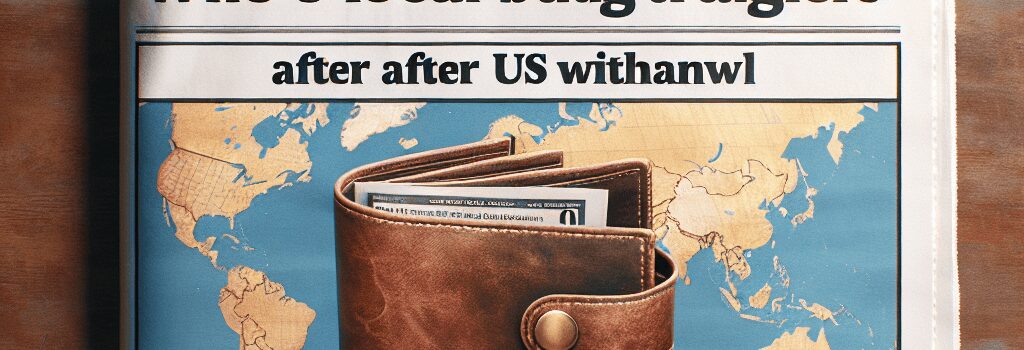WHO’s Local Budget Struggles After US Withdrawal

When the United States formally ceased funding to the World Health Organization (WHO) in 2025, the agency was forced to confront one of the toughest financial crises in its 75-year history. With a biennial budget slashed from roughly US$6.8 billion for 2024–2025 down to a proposed US$4.2 billion for 2026–2027, WHO Director-General Tedros Adhanom Ghebreyesus announced dramatic organizational streamlining, including halving senior management positions and reducing departments from 76 to 34.
Magnitude of the Shortfall
Historically, the US accounted for approximately 18 percent of WHO’s funding, combining assessed membership dues—calculated as a percentage of each nation’s GDP—and voluntary contributions. The abrupt withdrawal, executed via an executive order on President Trump’s first day in office, left WHO facing:
- A US$500 million salary gap over the next biennium
- Unpaid dues of about US$260 million for 2024–2025
- An anticipated budget gap of US$1.7 billion in 2026–2027
Even with recent investment rounds and modest increases in contributions from EU members and G7 partners, WHO expects to secure only about US$2.6 billion—roughly 60 percent of the reduced overall budget.
Why a Hospital Budget?
At current exchange rates, Geneva’s University Hospitals of Geneva (HUG) operates on an annual expenditure of about 1.9 billion Swiss francs (≈US$2.27 billion). For comparison, Boston’s Mass General Brigham system reported 2024 operating expenses of US$20.5 billion. Tedros highlighted that WHO’s global remit—overseeing disease surveillance in 150+ countries, coordinating emergency responses, purchasing and distributing vaccines, and running research networks—now must do so on a budget akin to a single mid-sized European hospital.
Organizational Restructuring and Key Departures
To align expenditures with the new funding reality, WHO has:
- Halved senior leadership roles from 14 to 7
- Reduced departments from 76 to 34, grouping related technical units
- Deployed advanced automation tools in finance and procurement—leveraging cloud-based ERP platforms to process purchase orders and grants faster, cutting overhead by an estimated 12 percent
Among the high-profile departures are Epidemiologist Michael Ryan, former Executive Director of the Health Emergencies Programme, and Canadian Assistant Director-General Bruce Aylward, renowned for his COVID-19 mission leadership in China. In a letter to staff, Tedros praised Ryan’s “steady presence” during the pandemic and Aylward’s “operational acumen,” but noted that fiscal necessity demanded these painful decisions.
Technical Innovations Under Financial Constraints
Despite the funding shock, WHO’s technology teams are accelerating several strategic initiatives:
- Global Outbreak and Response Network (GOARN): Integrating AI-powered anomaly detection algorithms to flag emerging hotspots by analyzing real-time syndromic surveillance and social media signals.
- Electronic Integrated Disease Surveillance System (EIDSS): Expanding lightweight mobile reporting apps in low-connectivity regions, reducing data latency from weeks to hours.
- Procurement Optimization: Implementing a blockchain-backed traceability ledger to ensure authenticity and expedite vaccine cold-chain logistics, aiming for a 20 percent reduction in spoilage.
Expert Perspectives on Operational Efficiency
Dr. Amina Rashid, a global health economist at Imperial College London, notes that “WHO’s pivot toward modular, cloud-native platforms reflects a broader shift in the UN system toward leaner, more data-driven operations. The challenge now is governance: ensuring new tech tools don’t exacerbate data sovereignty concerns among member states.”
Likewise, cybersecurity consultant Javier Morales emphasizes the need for “robust encryption and zero-trust architectures” as WHO migrates critical financial and health records to public cloud environments. “Data breaches in health emergencies can be as dangerous as supply chain disruptions,” he warns.
The Path Forward: Funding, Partnerships, and Innovation
In June 2025, the G7 reaffirmed a commitment to bolster global health security by pledging an additional US$1 billion to WHO’s Contingency Fund for Emergencies. Simultaneously, the African Union launched a regional pooled procurement mechanism, aiming to reduce duplication and negotiate bulk vaccine orders—efforts that could save up to US$200 million annually.
Tedros has repeatedly urged member states to approve a 5 percent increase in assessed contributions at the upcoming World Health Assembly. “Without predictable core funding, we risk ad-hoc financing that fragments our response capabilities,” he stated.
Conclusion
The unprecedented funding shock following the US withdrawal has forced WHO into a streamlining overhaul, driving both technological innovation and operational austerity. As the organization adapts to a hospital-scale budget, its success will hinge on unconventional partnerships, next-generation digital platforms, and renewed political commitment from member states. In this new era, WHO must prove that global health diplomacy and cutting-edge tech can together deliver world-class outcomes under severe fiscal constraints.